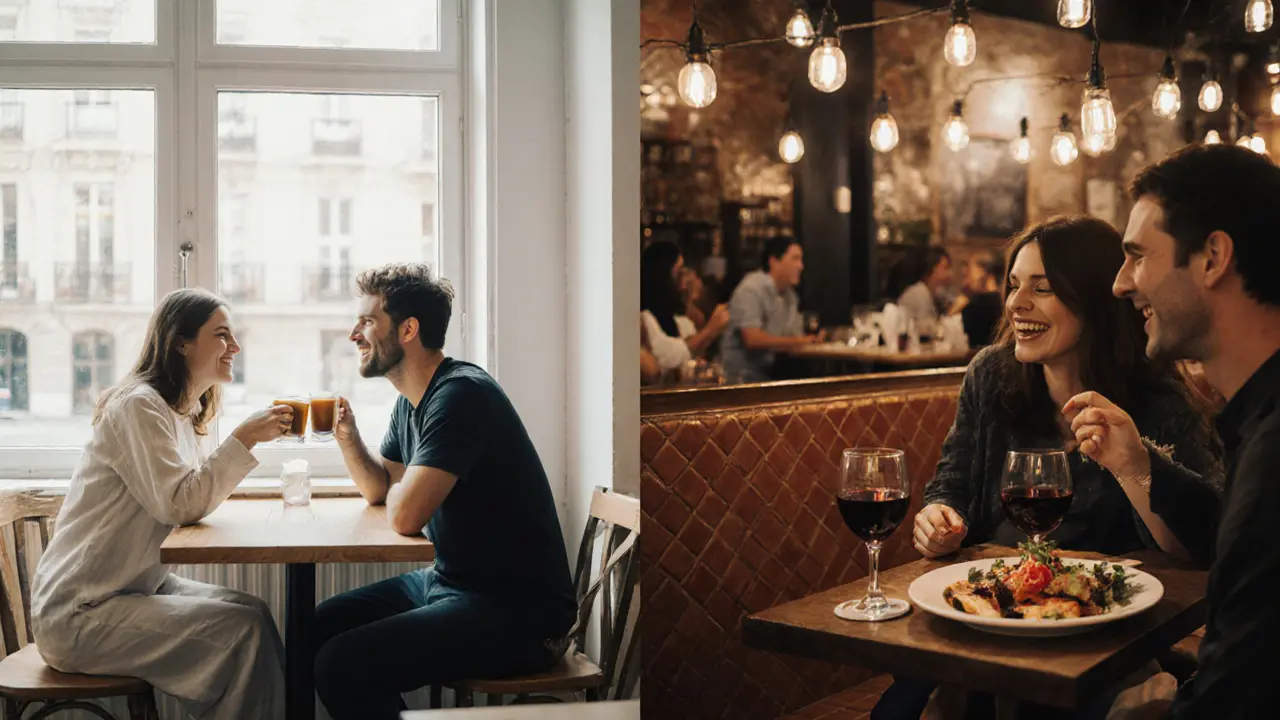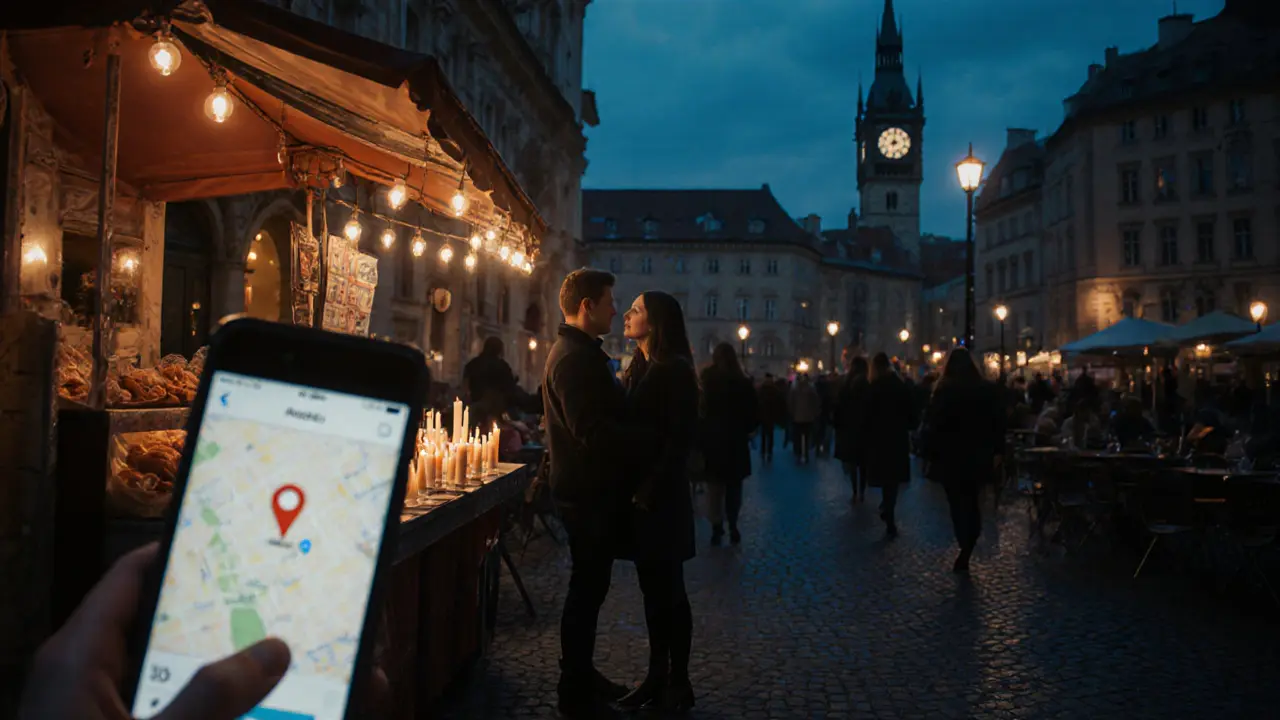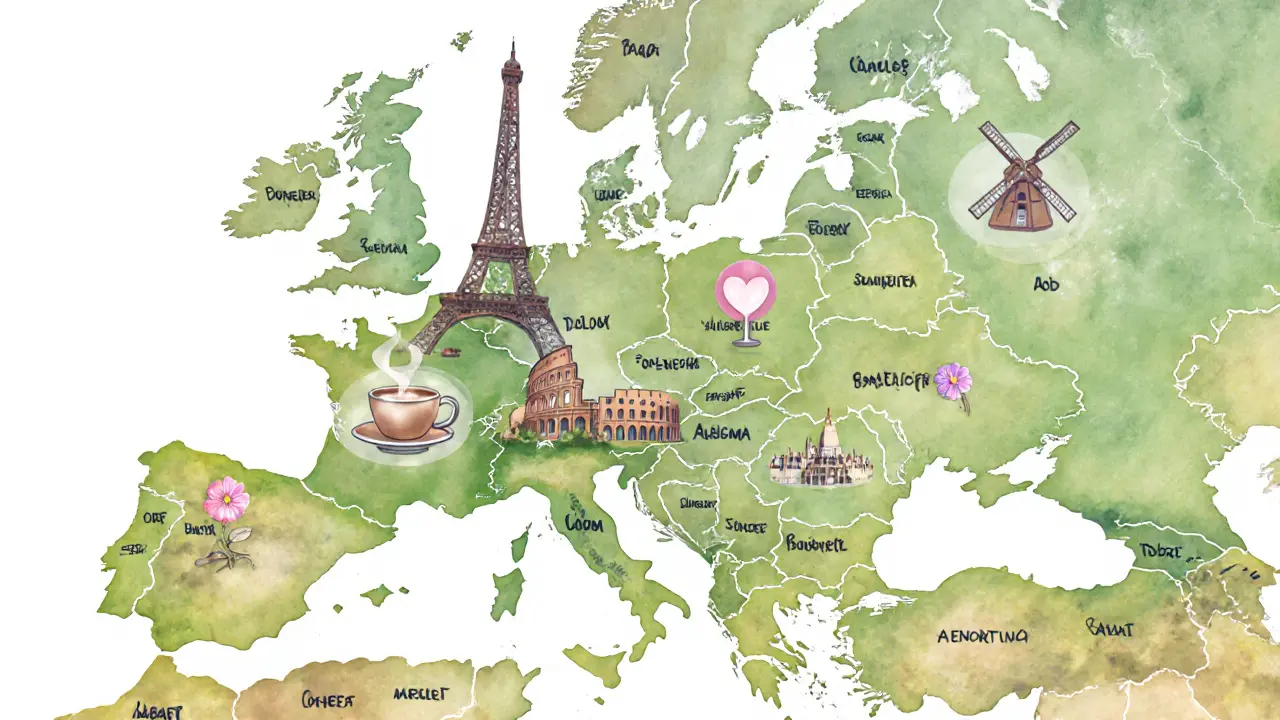Dating in Europe is the practice of forming romantic connections across the continent, where each country brings its own habits, expectations and slang.
Quick Summary
- Europe isn’t a single dating market - dating in Europe varies from the casual swipe culture of Berlin to the more formal first‑date rituals in Italy.
- Most major cities rely on apps, but meeting people in cafés, festivals and social clubs is still common.
- Language barriers matter less than you think; a genuine smile and clear communication go a long way.
- Safety basics are universal: meet in public, share your plans, and trust your gut.
- Understanding regional etiquette (gift‑giving, punctuality, dress code) boosts your chances of a good connection.
Key Points to Keep in Mind
- Know the dominant dating apps in each country - Tinder, Bumble, and local favorites like Once (France) or Happn (Germany).
- Adjust your first‑date expectations: a coffee in Copenhagen versus a wine bar in Barcelona.
- Respect cultural norms around personal space, compliments, and payment splitting.
- Stay safe: use video calls before meeting, pick busy venues, and let a friend know where you’re going.
- Be flexible - Europe’s diversity means you’ll encounter a mix of casual and serious dating styles.
Comprehensive Guide to Dating Across Europe
Imagine you’re on a short break in Paris, a weekend in Prague, or a summer festival in Croatia. You meet someone attractive, exchange numbers, and wonder: how do I turn this spark into a real date? This guide walks you through the whole journey, from understanding local customs to booking that first meetup.
Definition and Context
When we talk about European dating culture we refer to the set of social practices that people use to find romantic partners across the 44 countries on the continent. The context matters because Europe blends centuries‑old traditions (think arranged introductions in the Balkans) with modern, app‑driven flirting (like swiping in Stockholm). Knowing where the line falls helps you avoid awkward moments.
Benefits of Getting the European Dating Playbook Right
Understanding the nuances can turn a potentially awkward encounter into a memorable experience. For instance, a traveler who respects the Italian norm of paying the first bill often earns points for chivalry, while someone who insists on splitting a bill in Spain might be seen as too formal. Real‑world feedback shows that locals appreciate genuine curiosity and cultural respect - it’s a conversation starter by itself.

Types of Dating Available in Europe
- App‑based dating - Most urban areas rely on Tinder, Bumble, and regional apps like Hily (Germany) or Mingle2 (UK).
- Speed‑dating events - Popular in cities like London, Prague, and Warsaw, usually held in cafés or co‑working spaces.
- Social clubs and hobby groups - Join a language‑exchange meetup in Dublin or a hiking club in the Alps to meet like‑minded people.
- Traditional introductions - Still common in parts of Greece, Serbia, and Romania, where families play a role in matchmaking.
How to Find Dating Opportunities in Europe
Start with the tools you already trust. Download the major apps and set your location to the city you’re visiting. Turn on “passport” features if you want to match with people in neighboring countries. Complement the digital approach with offline tactics:
- Visit bustling cafés with communal tables - places like Café de Flore (Paris) or Central Perk‑style spots in Vienna encourage conversation.
- Check local event calendars for festivals, art openings, and food markets - these are perfect low‑pressure meeting spots.
- Join a language‑exchange night - you’ll meet locals eager to practice English and often open to meeting new friends.
- Use site‑specific features: Tinder’s “Passports” let you swipe before you arrive, while Bumble’s “BFF” mode can turn a friendship into romance.
What to Expect During a First Date
First dates differ by region, but a few universal signs help you read the situation:
- Timing: Northern Europeans (Sweden, Denmark) value punctuality. Arriving 5‑10 minutes early signals respect.
- Venue: In Southern Europe (Italy, Spain), a relaxed café or rooftop bar is common. In Central Europe (Germany, Austria), a craft beer garden or museum café is typical.
- Conversation topics: Politics can be touchy in the UK; stick to travel, food, and cultural curiosity for the first hour.
- Payment: Split the bill in the Netherlands and Scandinavia. In Italy and France, the person who initiated the date often pays, though offering to split is appreciated.
- Physical contact: A light touch on the arm is normal in France, but a handshake might be the norm in Finland.
Pricing and Booking Tips
Most first dates are inexpensive - think a €8 coffee in Lisbon or a €12 pint in Dublin. If you plan something more elaborate (like a dinner cruise in Venice), book in advance and check cancellation policies. Some dating apps offer “Boost” features for a fee; they can increase visibility but aren’t necessary for genuine connections.

Safety Tips for Dating Across Borders
- Always meet in a public, well‑lit place for the first meeting.
- Share your location with a trusted friend via a messaging app.
- Use the app’s video chat feature before meeting in person.
- Know the local emergency number (112 works throughout the EU).
- Trust your instincts - if something feels off, politely end the date and leave.
Comparison Table: App‑Based vs. Traditional Dating in Europe
| Aspect | App‑Based | Traditional |
|---|---|---|
| Speed of matching | Immediate - swipe and chat in minutes | Weeks to months - introductions via friends or events |
| Geographic reach | Broad - can connect across borders | Local - usually limited to city or community |
| Cost | Free basic, paid boosts optional | Often free, but may involve event fees |
| Cultural immersion | Variable - depends on conversation depth | High - meets through shared cultural activities |
| Safety controls | In‑app verification, photo checks | Reliance on personal network reputation |
FAQ: Your Questions About Dating in Europe Answered
Do I need to speak the local language to date someone?
You don’t have to be fluent, but learning a few key phrases shows effort and can break the ice. English works well in most major cities, especially among younger people.
Is it normal to date multiple people at once?
In places like Berlin and Amsterdam, casual dating and seeing multiple matches is common. In more traditional regions (southern Italy, Greece) people may expect exclusivity earlier.
What’s the best app for serious relationships?
Bumble’s “BFF” mode leans toward friendships, while Hinge markets itself as a relationship‑focused app. In Scandinavia, the local app “Mötesplatsen” has a reputation for serious dating.
How much should I spend on a first date?
A modest €10‑15 coffee or a shared tapas plate is typical in most cities. If you’re invited to a more formal dinner, expect to spend €30‑50, but you can always politely suggest a more budget‑friendly option.
Are there any dating customs I should avoid?
Avoid overly forward compliments about physical appearance in Germany; focus on personality and interests. In Italy, it’s polite to bring a small flower or a box of chocolates if you’re invited to someone’s home.
Next Steps
Now that you’ve got the lay of the land, pick one city, download the recommended apps, and set a low‑stakes meet‑up - maybe a coffee at a local bakery. Keep these cultural pointers handy, stay safe, and enjoy the adventure of meeting new people across Europe.









Lashawn Darden
October 7, 2025 AT 13:56Listen up, folks – the United States knows how to play the dating game better than anyone else across the pond, and anyone who thinks otherwise is just naïve. I’ve traveled through Europe and seen the chaos of mismatched expectations, and it’s obvious that American confidence and directness win the day. Don't let the fancy cafés fool you; a straightforward approach is what really gets results. So remember, if you want to avoid awkwardness, take a page from the US playbook and be bold.
M. D. Crosson
October 9, 2025 AT 12:16What an awesome guide!!! It really covers everything you need to know about dating across the continent!!!
Janey Doe
November 1, 2025 AT 14:16Thanks for the thorough breakdown. The sections on local etiquette are especially useful, as many travelers overlook subtle customs. I appreciate the clear headings and the safety checklist – those are non‑negotiable. Also, the table comparing app‑based and traditional dating helps me decide which approach suits my personality. Overall, a well‑structured guide that balances detail with readability.